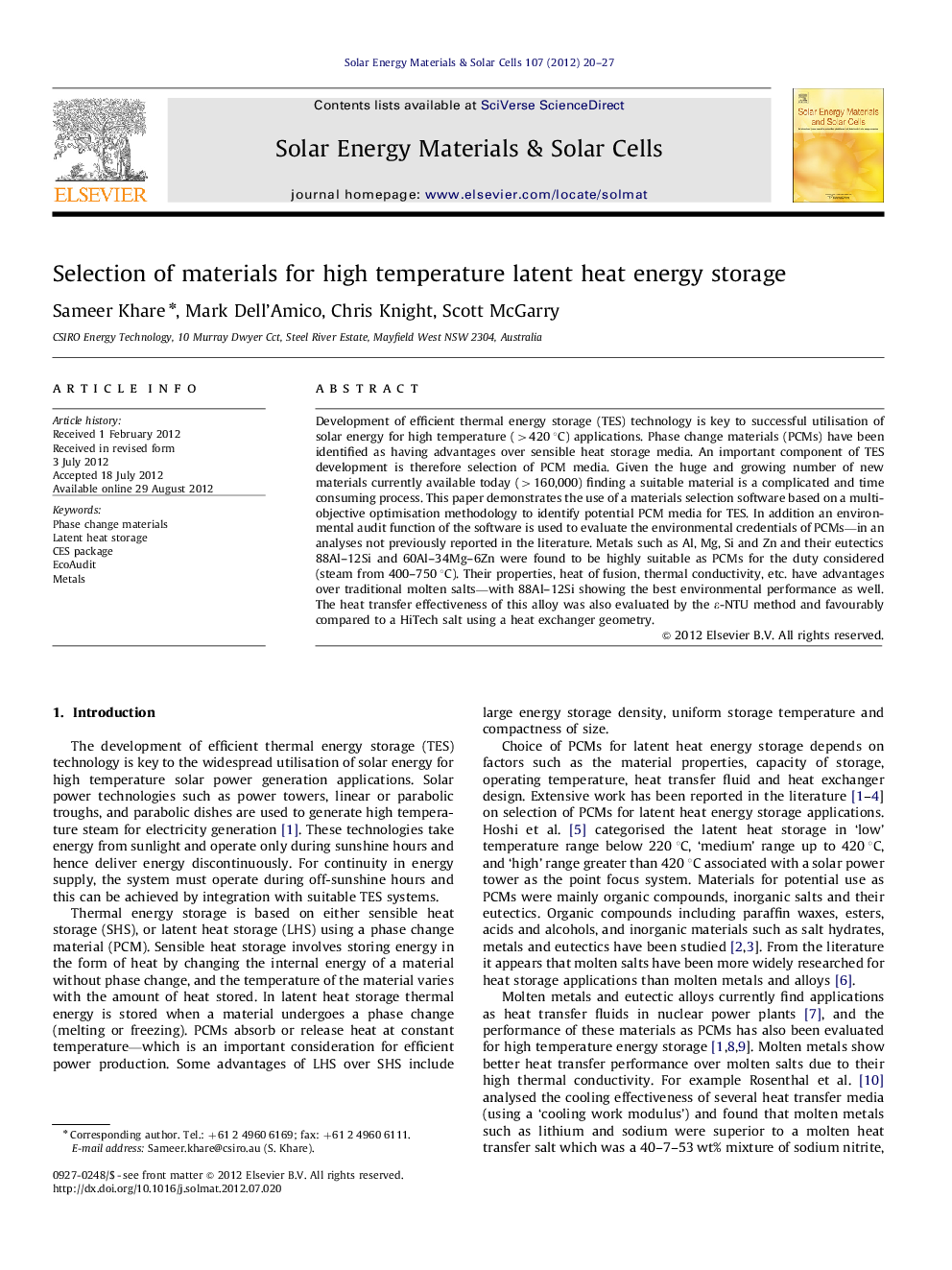| کد مقاله | کد نشریه | سال انتشار | مقاله انگلیسی | نسخه تمام متن |
|---|---|---|---|---|
| 78887 | 49344 | 2012 | 8 صفحه PDF | دانلود رایگان |

Development of efficient thermal energy storage (TES) technology is key to successful utilisation of solar energy for high temperature (>420 °C) applications. Phase change materials (PCMs) have been identified as having advantages over sensible heat storage media. An important component of TES development is therefore selection of PCM media. Given the huge and growing number of new materials currently available today (>160,000) finding a suitable material is a complicated and time consuming process. This paper demonstrates the use of a materials selection software based on a multi-objective optimisation methodology to identify potential PCM media for TES. In addition an environmental audit function of the software is used to evaluate the environmental credentials of PCMs—in an analyses not previously reported in the literature. Metals such as Al, Mg, Si and Zn and their eutectics 88Al–12Si and 60Al–34Mg–6Zn were found to be highly suitable as PCMs for the duty considered (steam from 400–750 °C). Their properties, heat of fusion, thermal conductivity, etc. have advantages over traditional molten salts—with 88Al–12Si showing the best environmental performance as well. The heat transfer effectiveness of this alloy was also evaluated by the ε-NTU method and favourably compared to a HiTech salt using a heat exchanger geometry.
► CES-selector™ has identified materials for latent heat storage applications.
► Metals and alloys have advantages over molten salts at high temperatures.
► EcoAudit showed energy consumption and CO2 emissions for 88Al–12Si the lowest.
► An effectiveness-NTU model showed improved performance for metals over molten salts.
Journal: Solar Energy Materials and Solar Cells - Volume 107, December 2012, Pages 20–27